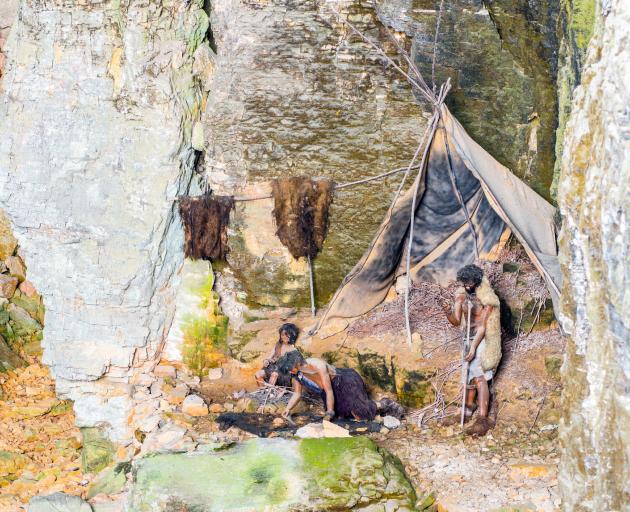
In recent years, genome sequencing has changed everything we thought about our origins and how we relate to eraly human species, writes Robin McKie of The Observer.
For David Reich, research can be a harrowing experience. The 44-year-old Harvard University geneticist says he now goes to bed terrified he will wake up to find his team's recent, stunning discoveries about human ancestry have been proved wrong. "We are now making so many startling insights I sometimes fear it must all be incorrect," he says.
To be fair to Reich, no-one has yet found any hint his results are invalid. "That still doesn't stop me worrying," he insists.
Reich's work as a leader of prehistoric population studies includes the discovery that all people of non-African descent carry small amounts of Neanderthal DNA, showing that homo sapiens - at one stage - must have interbred with this long-dead species of ancient humans. Reich was also involved in uncovering the existence of Denisovans, a previously unknown species of ancient humans, using DNA found in fossil scraps in a Siberian cave.
In addition, he has discovered that 5000 years ago northern Europe was overrun by invaders from central Asia, a migration of profound importance, for those newcomers became the first people of the British Isles.
These remarkable recreations of our past are outlined in Reich's book Who We Are and How We Got Here, in which he chronicles the spectacular rise of ancient DNA studies in the last few years. Thanks to this remarkable new science, we now know that about 70,000 years ago, our planet was remarkably rich in terms of its human variety.

The ingrained notion that there has only ever been one species of human being, Homo sapiens, is a latterday fiction born of our own self-important view of ourselves. Think instead of the bar scene from Star Wars with all those various people playing and drinking, the Israeli palaeontologist Yoel Rak says. That gives a far better flavour of our evolutionary past.

In making constant new discoveries about humanity, Reich and his Harvard team are now plunging into uncharted academic waters. "We are going out on a limb on so many different studies," he says. "It is very lonely and somewhat terrifying. We don't have the comfort of standing on the shoulders of others. We are the first. That's why I worry."
Reich's influence in this field has been immense and the output of his department monumental. This year alone he has been involved in producing an analysis that reveals the existence of a previously unknown group of ancient Native Americans from fossil remains uncovered in Alaska; a study that shows the ancient British people who built Stonehenge and other great neolithic monuments were almost completely replaced by invaders from central Asia 5000 years ago; and a paper that indicates there were at least two waves of settlers, from Taiwan and then Papua New Guinea, that were responsible - 3000 years ago - for the settling of one of the last pockets of the planet to be reached by humans, Vanuatu.
Ancient DNA studies are overturning our oversimplified vision of our past and are the outcome of a late 20th-century revolution in molecular biology that gave scientists the power to study DNA, the material from which our genes are made, with startling precision. For the first time, the exact structure and make-up of a gene could be determined and the detailed origins of many inherited illnesses and cancers outlined, setting in motion the slow, ongoing task of developing new treatments.
By contrast, the study of ancient DNA, which uses the same basic technology, began late but has since flowered far more dramatically. "It is in the area of shedding light on human migrations - rather than in explaining human biology - that the genome revolution has been a runaway success," Reich says.
The field's hesitant start is understandable. In samples from living animals, DNA exists in long, healthy, easily analysed strands. However, DNA starts to decay the moment an organism dies and those strands quickly fragment. And the longer the passage of time, the shorter the fragments become.
This disintegration poses problems. If, for example, you want to study Neanderthals, who dominated Europe for about 400,000 years and who were close in evolutionary terms to homo sapiens, DNA from their fossils is going to be in minuscule pieces. The last member of this doomed species died more than 40,000 years ago, after all. Genetic material taken from Neanderthal fossils is also likely to be contaminated with large amounts of DNA from bacteria and vegetation - and sometimes from researchers.
Trying to create a genome from these sullied scraps has been likened, by writer Elizabeth Kolbert, to reassembling "a Manhattan telephone book from pages that have been put through a shredder, mixed with yesterday's trash and left to rot in a landfill".
Nevertheless, scientists have persevered
and a Neanderthal genome was slowly spliced together from pieces of DNA only a few dozen units in length. It was a brilliant achievement, though Reich makes clear progress was halting. "The Neanderthal sequences we were working with had a mistake approximately every 200 DNA letters," he reveals in his book.
These errors were not due to differences between humans and Neanderthals, it should be pointed out, but to errors made in analysing DNA. Once Reich had navigated such problems to help create a meaningful genome of a Neanderthal, scientists could assess just how closely we were related to these ancient people. His tests subsequently showed, to everyone's surprise, that many modern humans carry small amounts of Neanderthal DNA in their genomes. "Non-African genomes today are around 1.5 to 2.1% Neanderthal in origin," he says.
So yes, homo sapiens and Neanderthals had a common ancestor, about 500,000 years ago, before the former evolved as a separate species - in Africa - and the latter as a different species in Europe. Then around 70,000 years ago, when modern humans emerged from Africa, we encountered the Neanderthals, most probably in the Middle East. We briefly mixed and interbred with them before we continued our slow diaspora across the planet.
In doing so, those early planetary settlers carried Neanderthal DNA with them as they spread out over the world's four quarters. Hence its presence in all those of non-African origin. By contrast, Neanderthal DNA is absent in people of African origins because they remained in our species' homeland.
Reich has since established that such interbreeding may have occurred on more than one occasion. More importantly, his studies show that "Neanderthals must have been more like us than we had imagined, perhaps capable of many behaviours that we typically associate with modern humans". They would, most likely, have had language, culture and sophisticated behaviours. Hence the mutual attraction.
That itself is intriguing. However, there is another key implication of Reich's work. Previously, it had been commonplace to view human populations arising from ancestral groupings like the trunk of a great tree. "Present populations budded from past ones, which branched from a common root in Africa," he states. "And it implies that if a population separates then it does not remix, as fusions of branches cannot occur."
But the initial separation of the two lines of ancient humans who gave rise to Neanderthals and to homo sapiens - and then their subsequent intermingling - shows that remixing does occur. Indeed, Reich believes it was commonplace and that the standard tree model of populations is basically wrong. Throughout our prehistory, populations have split, reformed, moved on, remixed and interbred and then moved on again. Alliances have shifted and empires have fallen in a perpetual, sliding global "game of thrones".
An illustration is provided by the puzzling fact that Europeans and Native Americans share surprising genetic similarities. The explanation was provided by Reich, who has discovered that a now nonexistent group of people, the Ancient North Eurasians, thrived about 15,000 years ago and then split into two groups. One migrated across Siberia and gave rise to the people who crossed the Bering land bridge between Asia and America and later gave rise to Native Americans. The other group headed west and contributed to Europeans. Hence the link between Europeans and Native Americans.
No physical specimen of the Ancient North Eurasian people had ever been discovered when Reich announced their existence. Instead, he based his analysis on the ghostly impact of their DNA on present-day people. However, the fossil remains of a boy, recently found near the Siberian village of Mal'ta, have since been found to have DNA that matches the genomes of Ancient North Eurasians, giving firmer physical proof of their existence.
"Prior to the genome revolution, I - like most others - had assumed that the big genetic clusters of populations we see today reflect deep splits of the past. But in fact the big clusters today are themselves the result of mixtures of very different populations that existed earlier. There was never a single trunk population in the human past. It has been mixtures all the way down."
Instead of a tree, a better metaphor would be a trellis, branching and remixing far back into the past, says Reich, whose work indicates that the idea of race is a very fluid, ephemeral concept. However, he is adamant that it is a very real one and takes issue with those geneticists who argue that there are no substantial differences in traits between populations.
"This is a strategy that we scientists can no longer afford and that in fact is positively harmful," he argues. Plenty of traits show differences between populations: skin colour, susceptibility to disease, the ability to breath at high altitudes and the ability to digest starch. More to the point, uncovering these differences is only just beginning. Many more will be discovered over the decades, Reich believes. Crucially, we need to be able to debate the implications of their presence at varying levels in different populations. That is not happening at present and that has dangerous implications.
"If as scientists we wilfully abstain from laying out a rational framework for discussing human differences, we will leave a vacuum that will be filled by pseudoscience, an outcome that is far worse than anything we could achieve by talking openly," Reich says.
The genome revolution provides us with a shared history, he adds. "If we pay proper attention, it should give us an alternative to the evils of racism and nationalism and make us realise that we are all entitled equally to our human heritage."
- Guardian News and Media 2018











